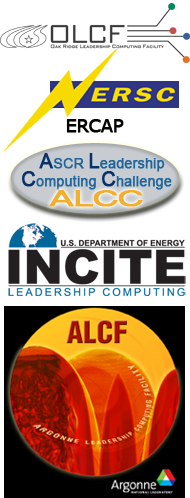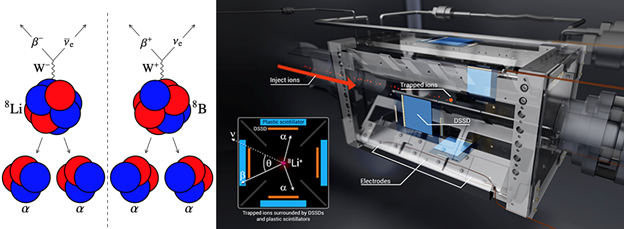Accessing ASCR Facilities
ASCR Facilities include High Performance Computing (OLCF, ALCF, NERSC) and High Throughput Networking (ESnet).
Access to ASCR facilities is open to the scientific and engineering research community including universities, industry, and the national labs.
Accessing ASCR High Performance Computers
The primary objectives of the ASCR Computational Facilities Allocation Policy are: (i) support DOE Office of Science mission critical projects, and (ii) provide substantial allocations to the open science community through a peer review process for a small number of high-impact scientific research projects.
In support of the allocation policy, ASCR High Performance Computers are accessible through five complementary mechanisms summarized in the table below. For more details on each allocation mechanism, please use the available links.
Allocation Mechanisms:
- INCITE – Innovative and Novel Computational Impact on Theory and Experiment
- ALCC – ASCR Leadership Computing Challenge
- ERCAP – Energy Research Computing Allocations Process
- SBIR/STTR – Small Business Innovation Research/Small business Technology Transfer
- Center Reserves – NERSC Center Reserves, ALCF Center Reserves, OLCF Center Reserves
| INCITE | ALCC | ERCAP | Center Reserves | |
|---|---|---|---|---|
| Science Mission |
|
|
Advance DOE Office of Science and SBIR/STTR mission | Advance science and engineering fields |
| Site (% Time) | LCFs (60%) | LCFs (30%) and NERSC (10%) | NERSC (80%) | LCFs and NERSC (10%) |
| Managing Office | LCFs | ASCR | DOE Office of Science and SBIR/STTR | LCFs and NERSC |
| Award Duration | Multi-year | One year | One year | One year |
| Number of Awards (2015) | 56 | 43 (2015-2016) | 634 | n/a |
| Mean Project Size in core-hours (2015) | 104M | 68M (2015-2016) | 3.8M | n/a |
Acronyms
- LCFs – Leadership Computing Facilities: Oak Ridge Leadership Computing Facility (OLCF, Oak Ridge National Laboratory, Oak Ridge, TN) and Argonne Leadership Computing Facility (ALCF, Argonne National Laboratory, Chicago, IL).
- NERSC – National Energy Research Scientific Computation (Lawrence Berkeley National Laboratory, Berkeley, CA)
- SBIR/STTR – Small Business Innovation Research / Small Business Technology Transfer
Accessing ASCR High Throughput Network
Tools and resources deployed, developed, and maintained by the Energy Sciences Network (ESnet) are accessible through multiple mechanisms depending on the specific resource. Below is a summary of the resources provided by ESnet for the scientific and engineering communities and corresponding methods of access. For greater detail, please visit the links provided below.
ESnet 100G testbed – ESnet 100 G testbed provides network researchers and industry with a realistic environment for testing 100G application, middleware, and security technologies on a high-speed national footprint. Access is available to the research community and industry through a peer review process managed by ESnet.
ESnet Engineering Tools – ESnet develops tools and resources for network monitoring, performance and utilization in support of the DOE Office of Science’s large-scale, collaborative science programs. Listed below are a few highlighted freely available open-source ESnet tools.
OSCARS – On-demand Secure Circuits and Advance Reservation System is an advanced software system for reserving time on high speed science networks. OSCARS has been adopted by 50+ research networks including JGN (Japan), US LHCnet (US), RNP (Brazil), and university networks.
perfSONAR – A tool developed collaboratively with multiple partners for end-to-end monitoring and troubleshooting of multi-domain network performance. perSONAR provides network engineers with the ability to test and measure network performance and is currently deployed in over 1200 locations around the world.
ESnet high speed network – Accessing ESnet’s high-speed network occurs any time users send information to or from an ESnet endpoint, as when data is transported from the Large Hadron Collider at CERN to US collaborators or when citizens visit the webpage of a DOE national laboratory. Networks or commercial entities interested in peering with ESnet for the purpose of exchanging traffic should send a request to routing@es.net.




